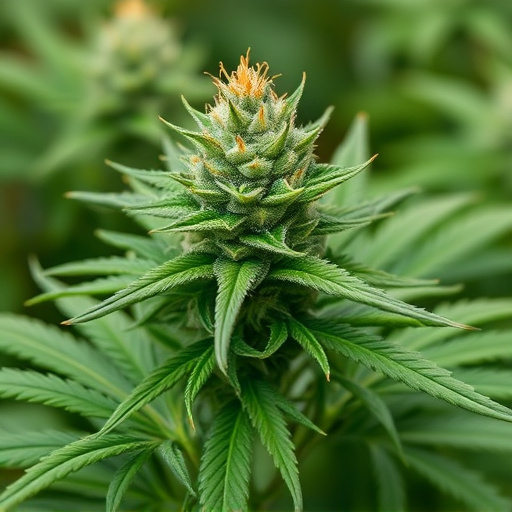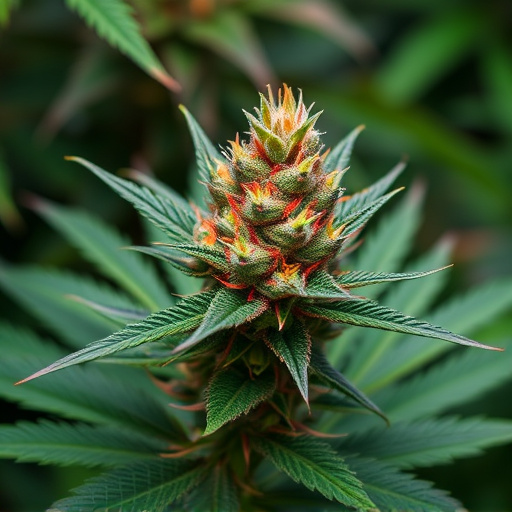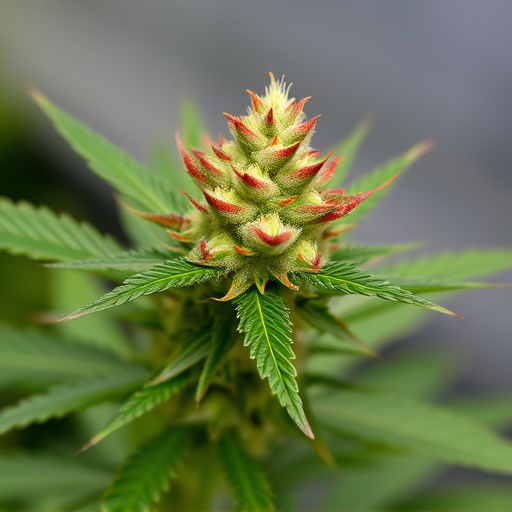Terpenes, natural compounds in cannabis flowers, are key to understanding the unique aromas, flavors, and therapeutic benefits of different medical cannabis strains. Specific terpenes like myrcene, limonene, and linalool offer various effects—from relaxation and mood elevation to stress reduction. Knowing these terpene-effect relationships empowers patients to select the best strains for their individual needs, optimizing therapeutic outcomes and enhancing their cannabis experience.
Terpenes, the aromatic compounds responsible for the distinct scents and flavors of cannabis flowers, play a crucial role in shaping the overall experience. Beyond their contribution to aroma and taste, terpenes offer significant medical benefits. This article explores why terpenes matter, delving into their functions within cannabis plants and how they interact with different strains to provide therapeutic effects. We’ll guide you through the best strains of medical cannabis known for rich terpene content and equip you with tools to select the ideal strain based on your specific needs.
- The Role of Terpenes in Cannabis Flowers
- – Definition and function of terpenes in cannabis plants
- – How terpenes contribute to the unique aroma and flavor profiles of different strains
The Role of Terpenes in Cannabis Flowers

Terpenes play a pivotal role in cannabis flowers, contributing to both their aroma and therapeutic effects. These organic compounds, produced by various plants, including cannabis, are responsible for the unique scents and flavors we associate with different strains. In medical cannabis, specific terpenes offer more than just pleasant aromas; they interact synergistically with cannabinoids like THC and CBD, enhancing or altering the plant’s overall effect. For instance, myrcene is known for its relaxing properties, making it a sought-after terpene in best strains of medical cannabis for anxiety relief. Similarly, limonene boosts mood and cognitive function, while linalool has been linked to reduced stress and improved sleep. Understanding these terpenes and their effects can help patients choose the most suitable strains for their specific needs, maximising the therapeutic benefits they receive from medical cannabis.
– Definition and function of terpenes in cannabis plants

Terpenes are a diverse group of aromatic compounds that play a vital role in cannabis plants, contributing to their unique flavors and aromas. They are responsible for the distinct scents and tastes associated with different strains of medical cannabis, making them an essential aspect when seeking the best strains for specific therapeutic benefits. Beyond their sensory appeal, terpenes also serve as protective mechanisms for the plant, acting as natural pesticides and repellents against insects and pathogens.
Each terpene offers distinct properties, influencing the overall effect of the cannabis flower. For example, myrcene is known for its earthier notes and is often linked to relaxing and sedative effects, while limonene provides a citrusy aroma and may evoke feelings of happiness and energy. Understanding these chemical profiles can help patients choose strains aligned with their desired therapeutic outcomes, enhancing their overall cannabis experience.
– How terpenes contribute to the unique aroma and flavor profiles of different strains

Terpenes play a pivotal role in shaping the distinctive aroma and flavor characteristics that make each cannabis strain unique. These volatile organic compounds, produced naturally by cannabis plants, contribute to the diverse sensory experiences associated with different strains. Each terpene offers its own aromatic profile, ranging from citrusy and floral notes to earthy and pine-like scents. When combined in various proportions, these terpenes create the complex and captivating fragrances that enthusiasts and medical users alike find so appealing.
The interplay of terpenes adds another layer of complexity to the best strains of medical cannabis. For instance, myrcene, a common terpene known for its earthy and musky scent, often contributes to the relaxing effects of certain strains, making them popular choices for managing stress and anxiety. Similarly, limonene, with its bright citrus notes, is linked to uplifting moods and promoting mental clarity. Understanding these terpene-effect relationships enables cannabis users to make informed decisions when selecting strains tailored to their specific needs and desired experiences.
Terpenes play a pivotal role in shaping the diverse aromas and flavors we experience in cannabis flowers, contributing significantly to their therapeutic potential. Understanding these organic compounds is essential for patients seeking the best strains of medical cannabis for their specific needs. By recognizing how terpenes interact with cannabinoids, consumers can make more informed choices, enhancing both the overall enjoyment and effectiveness of their cannabis experience.














